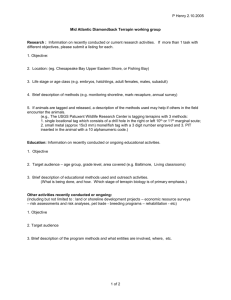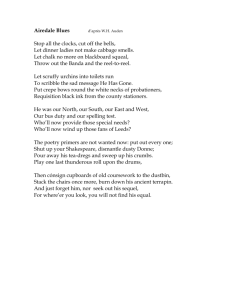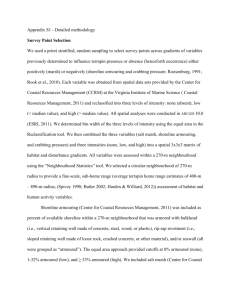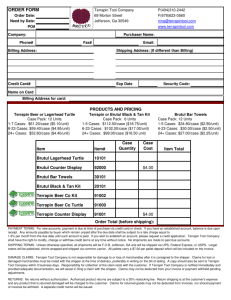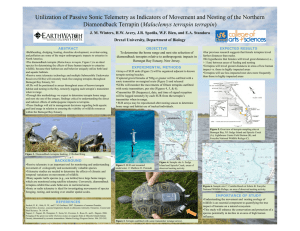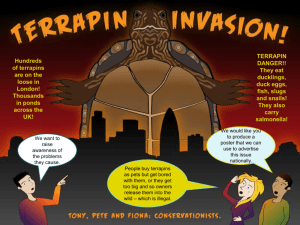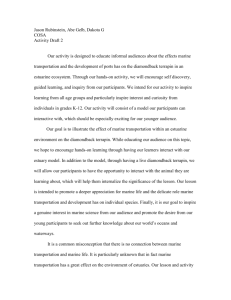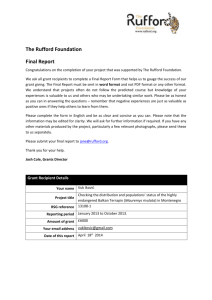In the Wild - The Maryland Zoo in Baltimore
advertisement
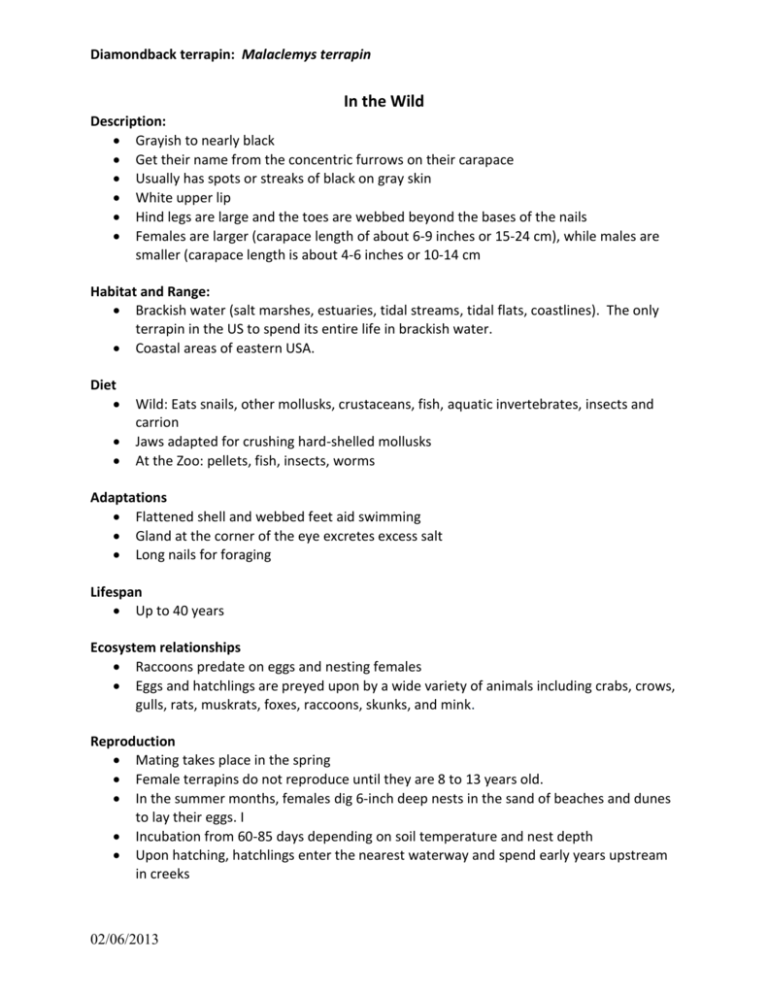
Diamondback terrapin: Malaclemys terrapin In the Wild Description: Grayish to nearly black Get their name from the concentric furrows on their carapace Usually has spots or streaks of black on gray skin White upper lip Hind legs are large and the toes are webbed beyond the bases of the nails Females are larger (carapace length of about 6-9 inches or 15-24 cm), while males are smaller (carapace length is about 4-6 inches or 10-14 cm Habitat and Range: Brackish water (salt marshes, estuaries, tidal streams, tidal flats, coastlines). The only terrapin in the US to spend its entire life in brackish water. Coastal areas of eastern USA. Diet Wild: Eats snails, other mollusks, crustaceans, fish, aquatic invertebrates, insects and carrion Jaws adapted for crushing hard-shelled mollusks At the Zoo: pellets, fish, insects, worms Adaptations Flattened shell and webbed feet aid swimming Gland at the corner of the eye excretes excess salt Long nails for foraging Lifespan Up to 40 years Ecosystem relationships Raccoons predate on eggs and nesting females Eggs and hatchlings are preyed upon by a wide variety of animals including crabs, crows, gulls, rats, muskrats, foxes, raccoons, skunks, and mink. Reproduction Mating takes place in the spring Female terrapins do not reproduce until they are 8 to 13 years old. In the summer months, females dig 6-inch deep nests in the sand of beaches and dunes to lay their eggs. I Incubation from 60-85 days depending on soil temperature and nest depth Upon hatching, hatchlings enter the nearest waterway and spend early years upstream in creeks 02/06/2013 Diamondback terrapin: Malaclemys terrapin Activity Diurnal Hibernate in the winter, buried in the mud Other “fun facts” Maryland state reptile and the mascot of the University of Maryland It is believed to be the world’s only turtle that lives exclusively in brackish water Conservation Status and Threats: Listed as lower risk/near threatened by IUCN Federally listed as a “species of concern,” which is an informal term that refers to species that might be in need of concentrated conservation actions Not listed in Maryland, but they are protected. It is illegal to take or possess them for commercial purposes. Incidental mortality by drowning in crab traps appears to be a major problem. This affects males more often, due to their smaller size, which also disrupts sex ratios and breeding. Also threatened by habitat loss and degradation In the late 1800s and early 1900s, diamondback terrapins were hunted to near extinction for their meat. They were considered a gourmet delicacy. Populations recovered after prohibition and the Great Depression reduced demand At the Zoo Hope was donated to the Embassy in 1985 as a hatchling. Diana was donated by a private individual in 1992 after being purchased at a fish market. What We Can Do Support efforts to prevent terrapin capture in crab traps through “by-catch reduction devices.” These devices are small enough to prevent terrapins from entering the trap, but large enough that legal sized crabs can still enter. Support the conservation efforts of organizations such as the Maryland Zoo and The Maryland DNR Tread carefully when visiting wetlands – stick to dedicated paths to avoid disturbing habitat Make environmentally responsible lifestyle decisions to help conserve habitat – conserve energy, reduce litter and pollution Dispose of your trash responsibly to avoid runoff into the Chesapeake Bay and surrounding wetlands. References: www.natureserve.org Maryland Zoo Education Department www.aqua.org 02/06/2013 Diamondback terrapin: Malaclemys terrapin www.usfws.gov www.iucnredlist.org http://www.dnr.state.md.us/ http://www.terrapinconservation.org/home.htm 02/06/2013
